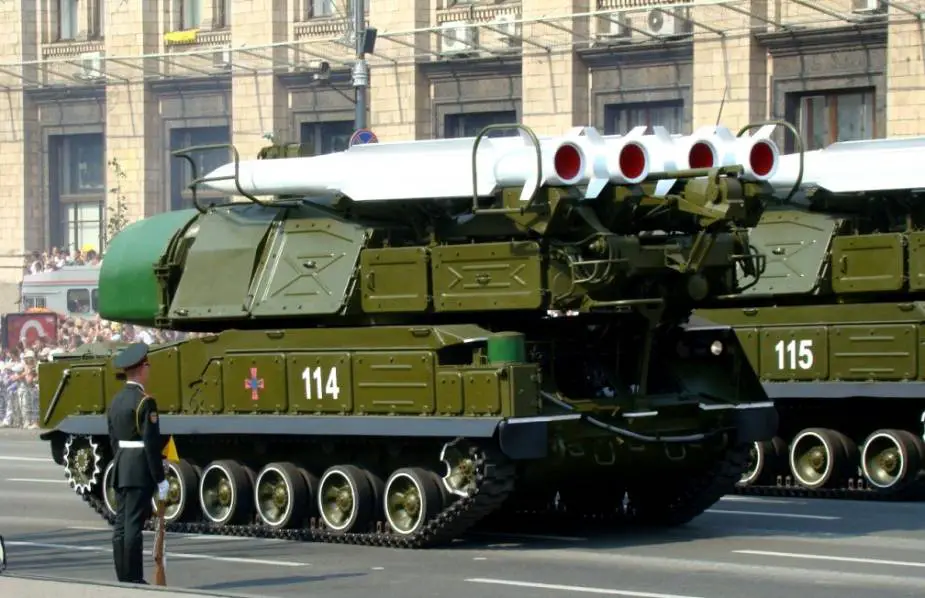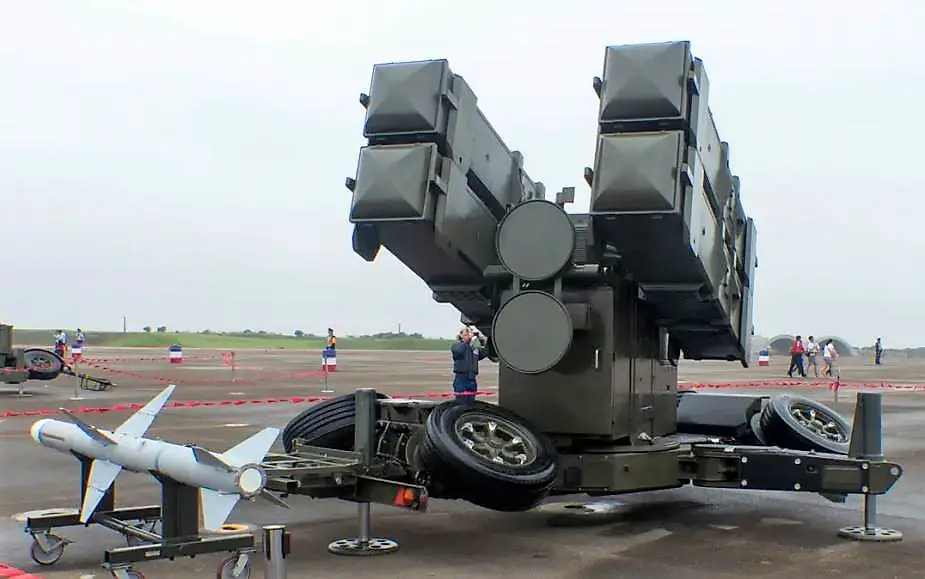- Army
- Conflicts in the world
- Israel - Iran conflict 2025
- Pakistan - India Conflict 2025
- Russia Ukraine War 2022
- Libya conflict day by day
- HAMAS - Israel War 2023
- Operation Serval in Mali French Army
- Sangaris operation Central African Republic
- Sangaris opération militaire République Centreafrique
- Ukraine - Russia conflict
- Syria conflict news
- Defence & Security Industry Technology
- Armies in the world
- Analysis Defense and Security Industry
- Conflicts in the world
- Navy
- Air
Ukraine army to fire Sea Sparrow air defense missiles from Soviet-era Buk launchers
Among the weapons that will be supplied by the U.S. to the Ukrainian army are radar-guided RIM-7 Sea Sparrow surface-to-air missiles, which can be launched from Soviet-era Buk surface-to-air missile systems by the Ukrainian air defense.
Follow Army Recognition on Google News at this link

Ukrainian 9K37 Buk SAMs during the Kyiv Independence Day Parade in 2008 (Picture source: Wikipedia)
The RIM-7 Sea Sparrow surface-to-air missiles will preciously increase the ammunition capacity of Ukrainian air defense systems, whose missiles are running out due to constant air attacks from Russia with missiles and Iranian-made Shahed kamikaze drones.
RIM-7 Sea Sparrow is a U.S. ship-borne short-range anti-aircraft and anti-missile weapon system, primarily intended for defense against anti-ship missiles. The system was developed in the early 1960s from the AIM-7 Sparrow air-to-air missile as a lightweight "point-defense" weapon that could be retrofitted to existing ships as quickly as possible, often in place of existing gun-based anti-aircraft weapons. In this incarnation, it was a very simple system guided by a manually aimed radar illuminator.
After its introduction, the system underwent significant development into an automated system similar to other US Navy missiles like the RIM-2 Terrier. Contemporary improvements being made to the Sparrow for the air-to-air role led to similar improvements in the Sea Sparrow through the 1970s and 80s. After that point, the air-to-air role passed to the AIM-120 AMRAAM and the Sea Sparrow underwent a series of upgrades strictly for the naval role. It now resembles the AIM-7 only in general form; it is larger, faster and includes a new seeker and a launch system suitable for vertical launch from modern warships. The Sea Sparrow remains an important part of a layered air defense system, providing a short/medium-range component especially – but not only – useful against sea-skimming missiles.
Taiwan operates ground-based Sea Sparrows as part of the Skyguard SHORAD system. Five hundred missiles entered service in 1991 and are deployed on trailers with four box launchers. The Ukrainian army will use them for ‘’standard’’ air defense tasks, firing them from modified, Soviet-era 9K37 Buk missile launchers.

Taiwanese Skyguard launcher with Sea Sparrow missile displayed at Ching Chuan Kang Air Base. (Picture source: 玄史生/Wikimedia Commons)
Soviet-era Buck air defense system
The Buk is a family of self-propelled, medium-range surface-to-air missile systems developed by the Soviet Union and its successor state, the Russian Federation, and designed to counter cruise missiles, smart bombs, fixed- and rotary-wing aircraft, and unmanned aerial vehicles.
The Buk missile system is the successor to the NIIP/Vympel 2K12 Kub (NATO reporting name SA-6 "Gainful"). The first version of Buk adopted into service carried the GRAU designation 9K37 Buk and was identified in the West with the NATO reporting name "Gadfly" as well as the US Department of Defense (DoD) designation SA-11.
With the integration of a new missile, the Buk-M1-2 and Buk-M2 systems also received a new NATO reporting name – Grizzly – and a new DoD designation: SA-17. Since 2013, the latest incarnation "Buk-M3" is currently in production and active service in the Russian army with a new DoD designation SA-27. The system was used to shoot down the Boeing 777-200ER Malaysia Airlines Flight 17, on 17 July 2014, in eastern Ukraine, killing 298 people. Evidence included missile fragments found on site including pieces of warhead stuck in the wreckage as well as non-explosive parts of the missile with serial number remnants. Missile fragments were recovered from the bodies of the flight crew. On 7 August 2014, pro-Russian separatist forces shot down a Ukrainian Air Force MiG-29 with a Buk surface-to-air missile near the town of Yenakievo. The pilot managed to eject.
The Ukrainian army reportedly had 72 9K37M1 Buk-M1s as of 2016. Modernization of stored systems to Buk M1-2 standard was planned. Their current status is unknown.


























